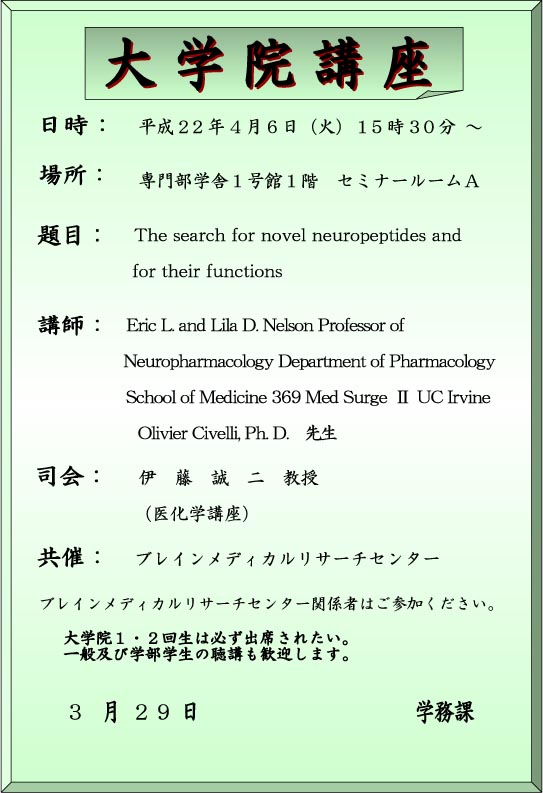
抄録:
G protein-coupled receptors (GPCRs) are endowed with an extraordinary importance in the organism’s life and survival because they are the major regulators of signal transmission. The GPCRs are activated by specific transmitters but not all GPCRs have been matched to transmitters. Some 100 do not have known transmitters they are the so called orphan GPCRs.
Orphan GPCRs are receptors lacking endogenous ligands.
Although orphan GPCRs are genes without functions, they offer the potential to discover new intercellular interactions and new insights for basic research and ultimately for drug discovery, but their endogenous ligands must be identified for this to happen. Orphan GPCRs have been used as targets to identify novel endogenous transmitters. This strategy has led to the discovery of several neuropeptides. However, the discovery of novel neurotransmitters or neuropeptides is only the first step in this strategy. The second one is to find the functions of these new transmitters in the organism. This is a difficult yet exciting aim as it leads to the possibility of pharmacological intervention. In this presentation, I will discuss one such “deorphanized” system, the melanin-concentrating hormone (MCH) system.
MCH was found as a peptide regulating paling in the scales of teleost fishes. It was later shown to stimulate food intake in mammals. We found its receptor as one of the orphan GPCRs. We searched for the functions of the MCH system in rodents and found that it modulate responses that are directed by dopamine, in particular reward and startle response. These data open new doors for our understanding of the MCH system and for its potential use in drug discovery.